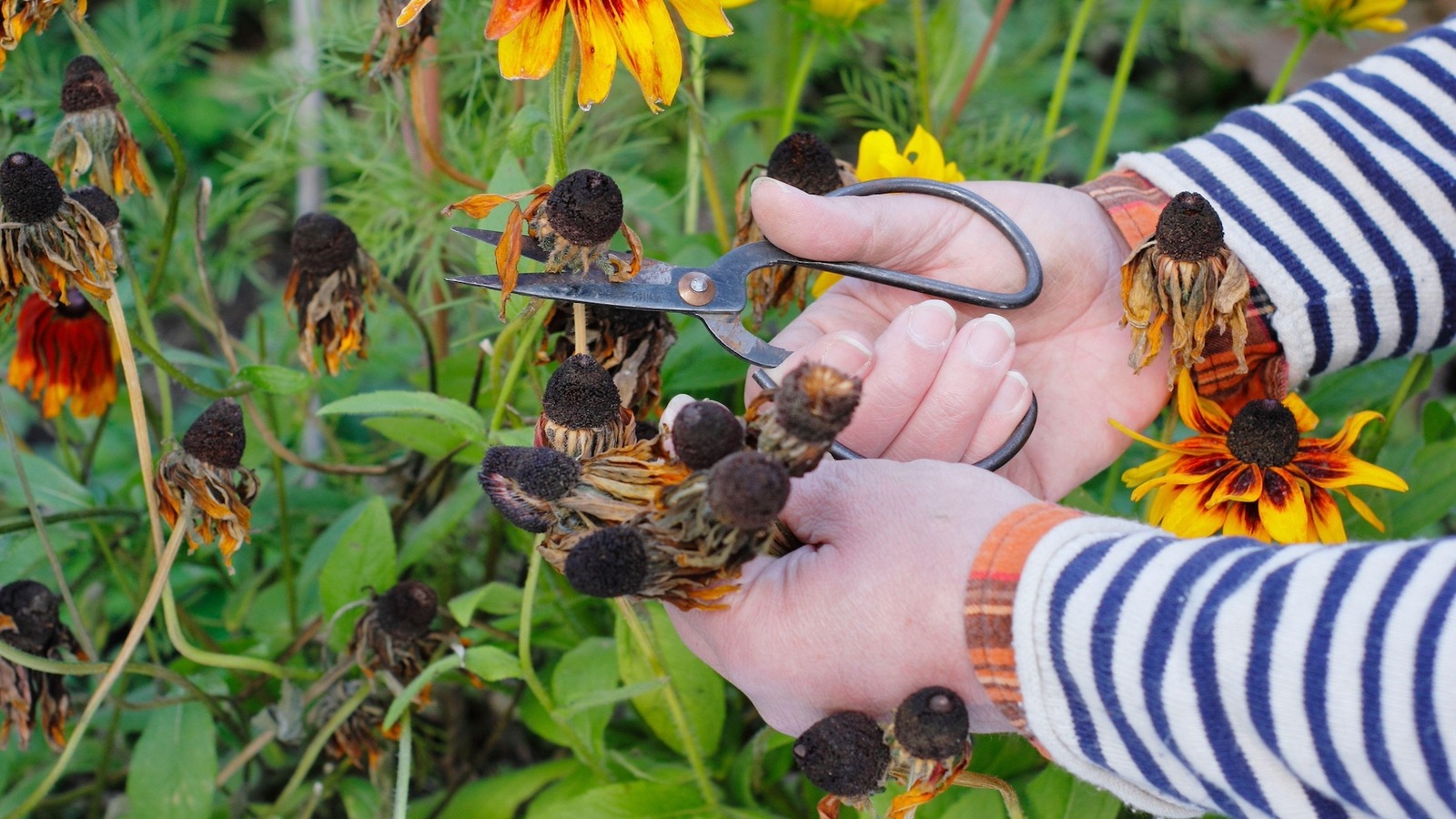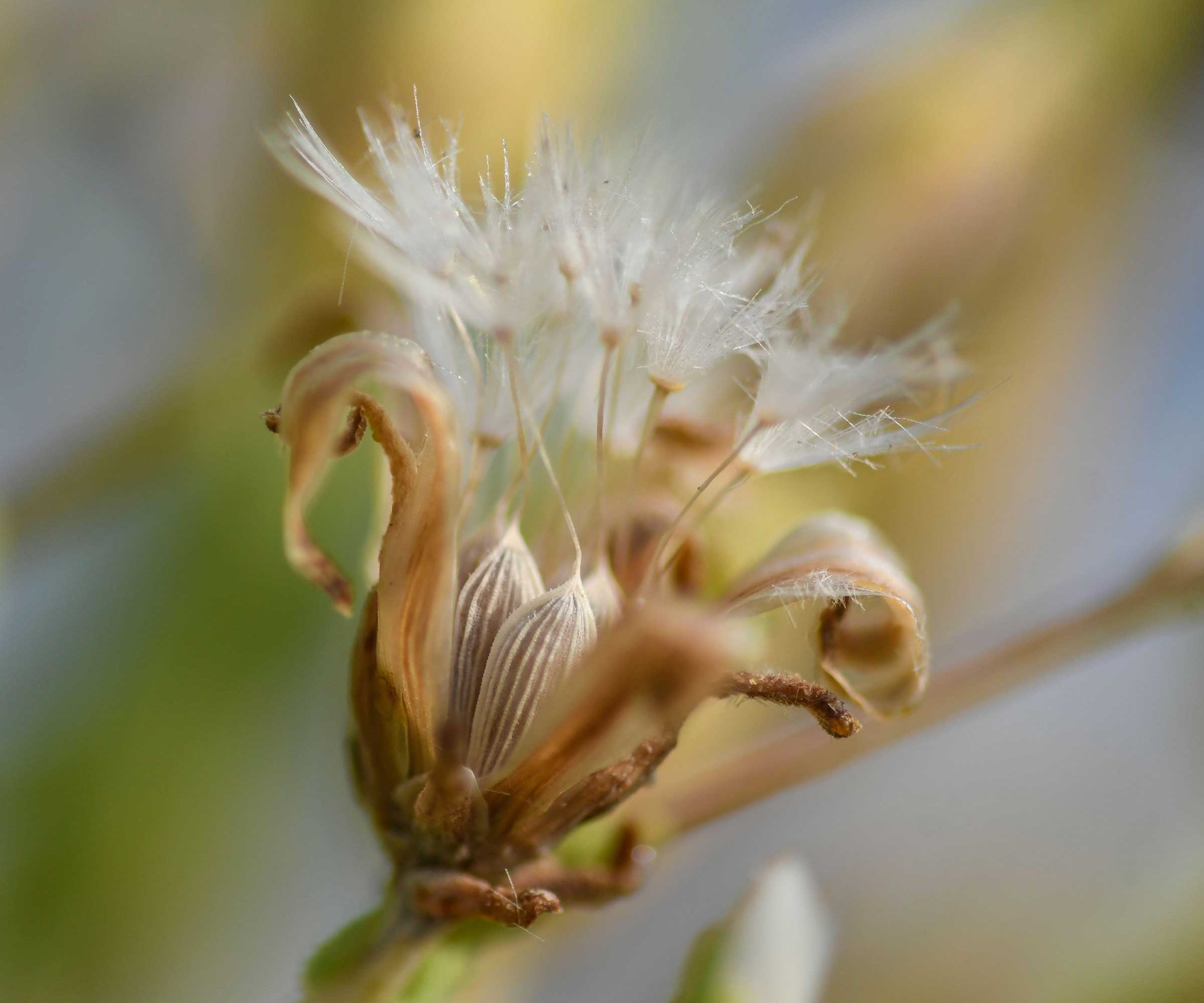
The latter stages of summer and early fall are a good time to collect seeds from your garden flowers. However, there are some general guidelines, if you want to avoid seed storage mistakes.
Whether you want to sow the seeds in your yard or share and swap them with friends, learning how to store seeds after collecting is a satisfying and savvy way to save on garden expenses. It's a simple task but it does require a few basic considerations.
We've asked gardening experts how to avoid the pitfalls when it comes to seed storage. By following these 7 simple steps, you can prevent the disappointment of rotten seeds or un-sprouted seedlings and look forward to beautiful blooms come spring and beyond.

7 seed storage mistakes to avoid
Storing seeds takes a little time and effort, so the first key to successful storage is to ensure your seeds are of good quality before you begin.
'Always choose seeds from the best looking examples of a flower,' says Kim Stoddart, garden expert and author of The Climate Change Garden and The Climate Change Resilient Vegetable Garden, available from Amazon. 'You want the seed you save to be the best it can be, as this impacts on the quality of the flowers it will produce. So choose seed from healthy plants (and avoid any that have been diseased or weakened), this way you can plant breed for the best flowers for your garden.'
1. Collecting seeds too soon or too late

Many self-seeding flowers and fruits produce their seed in late summer and fall, however, the best time to collect them will vary from plant to plant and your US hardiness zone.
'When to collect seed varies from flower to flower, but from early August onwards is generally a good time to begin,' continues Kim Stoddart.
'Seed that comes in some form of protective shell, such as poppy or honesty, is afforded greater protection from the elements, but generally, it's good to collect seed from flowers as you see ripe seed heads formed. By ‘ripe’ I mean seed that has had a chance to fully mature (fatten) on the plant, it can then be removed and safely dried indoors.
'Seed that is removed too early won’t be fully formed and therefore won’t be as effective for growing on. The seed has to be the optimum size because it needs to have enough energy to germinate and grow the following year.'
'The timing for seed harvesting depends on the geographic region, as well as the plant species,' says horticulturist, Kim Eierman, founder of EcoBeneficial and author, of The Pollinator Victory Garden, available from Amazon.
'Keep an eye on the plant species you want to collect from. Seed heads may not mature all at once, so you might need to harvest several times from the same plant.
'If you wait too long, viable seeds may have already dispersed; and any remaining seeds may be too desiccated and not viable for planting.
'If you're collecting from a property other than your own, get permission first, and never take more than 5% to 10% of the available seed.'
2. Storing damp seeds

If you've been keeping an eye on your best perennials for seed heads and can see they are ripe and ready, check the weather forecast and collect the seeds on a warm, dry day.
'The seeds of most perennial species should be collected when they are mature and dry,' explains Kim Eierman. 'If seeds are stored in moist conditions, they may lose viability or even rot.'
Kim Stoddart adds: 'The best thing to do is to ensure that your seed is fully dry before storage. This can be achieved by placing your seed on an open tray or board indoors in a dry location.
'If it has been a soggy summer in your region, avoid collecting seed that has sat for too long outside and is subject to lots of rain, as that can make seed rot, or more susceptible to pests and mold.'
3. Leaving chaff and debris around seeds

Depending on which flowers and plants you've collected seeds from, either perennials or perhaps some of the best annual flowers, there may be pods, seed heads and other dried bits of debris surrounding the seeds. Remove this, so you're just left with the seeds to store.
'Once fully dried, you can then move onto the business of checking through seed and removing any bits of seed head and plant debris,' says Kim Stoddart. 'Do also check for any insects and remove any slightly nibbled or damaged-looking seed to ensure that only the best quality material is stored away.
'Also look for signs of mold, as one moldy seed in the mix can damage the rest. You can rinse the seed in water before drying again, but it isn’t essential to do so and can be rather fiddly. The main thing is to ensure your seed is pest, nibble, mold and disease free, which you can tell by looking at it.'
4. Storing seeds in plastic

'Once you have collected dry, mature seeds, such as tomato or marigold seeds, they can be stored in brown paper bags or paper seed or coin envelopes,' says Kim Eierman. 'Store the seeds in a cool, dry place.'
'Paper seed packets are always the best,' adds Kim Stoddart. 'Plastic can encourage moisture 'sweating’ which will encourage mold so is best avoided.
'I reuse old seed packets for this purpose or old envelopes. Just ensure they are fully sealed and safely stored away somewhere cool and dry to avoid any insects getting in.'
Seed envelopes are available from Walmart.
5. Storing seeds somewhere too hot

A greenhouse shelf is not the best place for seed storage if the sun shines on the glass panels for large parts of the day. A cool, dark, dry place is most suitable.
'Seed must not be stored in the heat, as that can damage its ability to germinate the following season,' explains Kim Stoddart. 'So keep stored seeds away from direct sunlight and radiators over winter.'
'Seeds that you intend to plant within a couple of months or a year will be fine at room temperature,' says Roger Sipe of Hobby Farms. 'They should be stored in paper bags or airtight containers in a room with the most stable temperature in your house, such as a basement or dark closet.'
'The optimal scenario for storing seeds is a temperature of 50º F (10º C) or less and a humidity level of 50% or less,' says Kim Eierman. 'It's best when the humidity level and the temperature are consistent over time.
'However, those perfect conditions may be hard to achieve. A simple approach is to store seeds in a cool, dry basement or the refrigerator. Dry seeds stored in seed envelopes can be placed in an airtight container, such as a glass jar. I suggest including a silica gel packet or two in the jar to keep the seeds dry.'
Seed storage essentials
This pack of 50 kraft paper seed packet envelopes with their clear windows, gummed seal and preprinted labels prompt efficient labelling and easy organization, so you know which seeds are stored where.
This box of silica gel packs for moisture control will see you through many seasons of seed collection. Just pop one pack in a metal box or glass jar with your paper seed packs to keep them dry.
Store all your seeds safely in one place with this metal storage box, that will fit neatly onto a shelf. It has four separate compartments, so it's easy to organize flower, fruit and veggie seeds.
6. Forgetting to label your seeds sufficiently

Writing the name of the plant or flower the seeds were taken from is an obvious task. You'll want to know what you're planting when it comes to using them. Adding the collection date and other information is useful too, according to Kim Eierman.
'As well as the everyday name, I suggest including the botanical name of the plant, where it was collected, and the collection date,' says Kim. 'This informs your germination results (what seed did well, or not) and the best timing for seed germination.'
7. Not using seeds in time

You might ask, how long can you store seeds for? Well, seeds don't last forever, so adding the collection date, helps determine the age of the seeds too. This way, you can ensure that you use them in time.
'The seeds of some plants, like Allium species, deteriorate fairly quickly and should not be kept for more than one season,' says Kim Eierman.
'Calendulas are easy annual flowers from which to save seeds, as are marigolds, nasturtiums and zinnias, all of which will remain viable for roughly five years,' says Roger Sipe.
'The use-by-date is variable from seed to seed, but it’s also about how you store it,' says Kim Stoddart. 'Generally, it’s worth using home-saved seed within a few years to ensure maximum germination rates.
'That said, even very old seed is worth attempting to grow, just sow seed more thickly in modules. It’s always worth taking a 'waste-not-want-not' approach in your gardening as it saves money and feels incredibly good when you have surprise successes with seeds that would otherwise go to waste.'
Looking ahead, consider learning how to make wildflower seed bombs, filling your hard with beautiful and wild blooms.



!["[T]he First and Fifth Amendments Require ICE to Provide Information About the Whereabouts of a Detained Person"](https://images.inkl.com/s3/publisher/cover/212/reason-cover.png?w=600)



